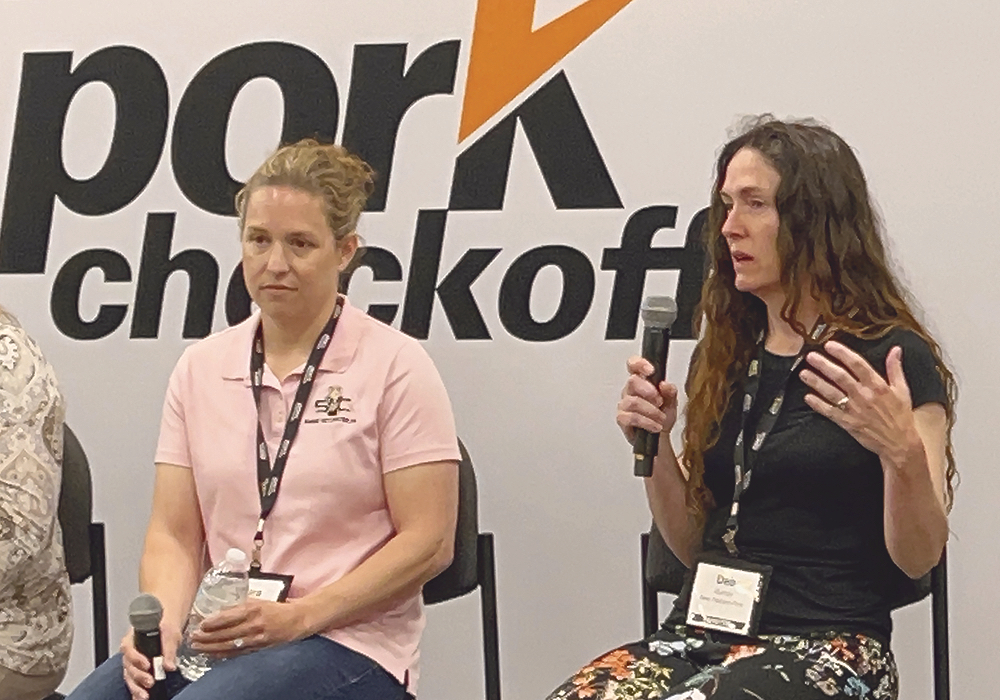Considerations for the right place for manure

When it costs more to apply manure to high fertility fields than the manure is worth, it may be time to consider other options.
Read Also


PRRS hog virus now tougher to control
Glacier FarmMedia – Today’s PRRS isn’t yesterday’s PRRS. That means pig producers and veterinarians should mutate their approaches in the…
Fertilizer is expensive. Anyone growing crops knows that maintaining good soil fertility is essential to maintaining yields. Livestock farmers have fertility built into the system and often soil fertility levels, especially in the fields surrounding manure storages, can be quite high. As soil fertility levels rise so does the risk of nutrient loss to the environment. The best option for many livestock farms is to move the manure to lower fertility fields furthest from the storage.
Distributing manure nutrients from areas of high soil fertility to areas of low fertility has several advantages. Multi-season applications help maximize manure storage volumes and helps reduce methane production during the hot summer months. With an environmental focus on phosphorus (P), nitrogen (N) and organic matter (OM), the dynamics of manure management are changing to apply more manure during the growing season and ideally to growing crops. High soil P levels increase the risk of phosphorus loss to water sources, while soils with high nitrate levels in saturated soils can increase nitrous oxide emissions. Meanwhile OM is a sought-after commodity for improving soil health, especially on fields with a predominant corn-soybean rotation.
Adding manure to fields with high fertility is like adding money to a retirement saving plan, in that it may take years before the crops will use the nutrients added from the manure. In the short term, the manure added to these fields may only provide immediate return on investment for the applied nitrogen.
Crop neighbours without livestock need the nutrients and are often willing to trade straw or pay their livestock neighbours for the fertilizer value, especially the P and K portion of the manure. Soil health benefits are amplified when the manure is applied together with cover crops. An example of this is illustrated using a typical 7.5 per cent dry matter liquid dairy manure applied at 5,000 gallons per acre with a cover crop after wheat harvest. The manure would have an approximate available N-P-K nutrient value of 50-70-125 lbs/ac with a fertilizer equivalent value of about $150 per acre. If applied to a field already high in P and K fertility, only the nitrogen component would be utilized by the crop while the P and K would further accumulate. If the manure was sold or traded to crop neighbours with lower fertility levels, the livestock farm gets an immediate return on investment while the crop farm receives required macro and micronutrients along with organic matter.
The logistics of moving manure and the distance from storage to field will determine how practical selling or trading manure can be. Application costs can be significant especially when travelling more than a few kilometers. The more concentrated the manure nutrients the more feasible it is to move manure further distances. There are new technologies available for removing water from manure to allow for easier and further transport. Separating solids also means dealing with the diluted “nutrient water” portion of the process. Watery manure (less than 1 per cent dry matter) can result in significant yield boosts, especially when applied to moisture-stressed crops. High boom technology like those used with irrigation in dry-land corn or those used for fungicide application in tasseling corn have also been transformed for watery-manure irrigation. (Photo at top shows watery-manure irrigation into standing corn using a Rain 360© unit)
Glen Arnold, Manure Nutrient Specialist from Ohio State University has been testing these units and says that “they are designed to apply manure into a standing (corn) crop throughout the growing season. The manure is delivered to the base of the corn plant and the machine is set to operate continuously (day or night) while the field conditions are suitable.” Placement of the watery manure on the soil surface into a crop canopy reduces volatilization losses and odour.
The cost of handling manure is associated with the livestock portion of the business. In fields with high fertility, the bottom line may be boosted by trading or selling manure to neighbours without livestock. New technologies are enhancing these opportunities.
Source: Farmtario.com

